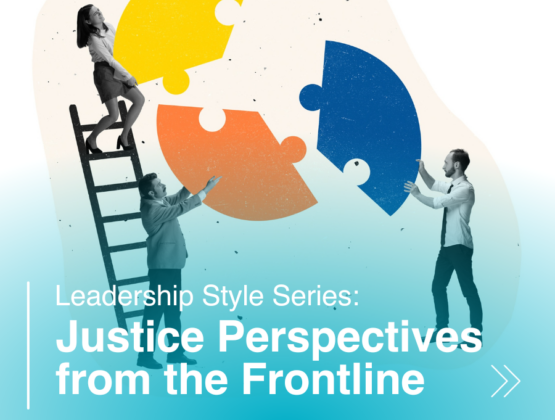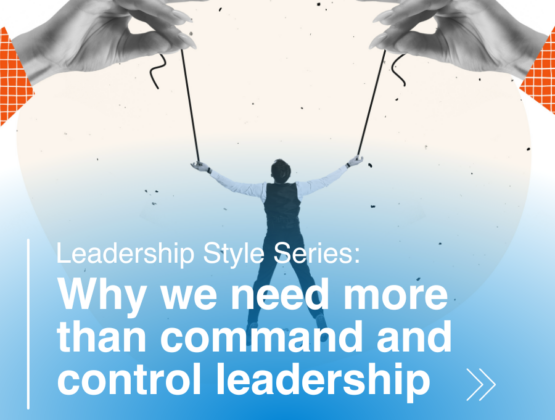Published by Skills for Justice
Challenges for justice leaders
Date 19.02.24

This is the third article in the six part Leadership Styles series. See the first and second articles →
Creating more inclusive cultures
Reports of racism, misogyny and victimisation have been consistently reported across a number of justice sector services. Less than 10% of the working age population in the public sector are from an ethnic minority group.
Diversity and inclusion therefore remains a big issue for a number of organisations, where efforts to embrace diversity have resulted in stilted, clumsy conversations, sometimes through fear of saying the wrong things, or of not having the language to engage in the debate.
So how can we make these conversations easier? We can start by giving people a frame for those difficult conversations, through the language of coaching. Adopting a coaching style of leadership can also help leaders to build confidence in creating psychologically safe spaces for those difficult conversations about diversity and inclusion to happen. And those conversations, facilitated well, have the capacity to empower others to think more openly and foster a culture of belonging and embracing of difference.
Managing Generational Expectations
The world of work has been disrupted and radically transformed. The way in which people want to be led, what they want from work, and where they want to work, has been influenced not just by the post pandemic shift towards hybrid and remote working, but also by the similar and different needs of a multi-generational workforce. With 5 different generations in the workplace, each with different motivators, wants and needs, and different expectations of work, it is unfathomable that an outmoded style of command and control leadership can still thrive outside of high risk and emergency response situations.
Let’s consider for a moment the needs of a workforce where millennials now make up more than 40% of the UK workforce. Many have high aspirations for career growth and expect their leaders to help them learn and grow, provide regular feedback, recognise their accomplishments, and make them feel comfortable at work. Generation X seek professional coaching and tend to sign up for mentorship programmes. They detest being micro-managed by others and believe in empowering and trusting others. Generation Z want a flexible and supportive culture, meaningful work that aligns with their values, and to work with diverse, inclusive teams that reflect their own diversity.
These expectations of work are highly incompatible with a default command and control style of leadership.
Armed with the ability to give really good feedback and nurture talent through coaching conversations, leaders have the ability to inspire a generation for whom this is a critical expectation, to be led well, and to be nurtured. And how might the ‘dreaded appraisal process’ be transformed and transmuted by a process where individuals proactively and continuously seek to improve performance through continuous feedback?
Reversing the ‘learned helplessness’ phenomenon
We have seen from the recent reports into the police and fire services a fear of speaking up, a consequence of a blame culture and also of expecting to be ‘told’ what to do. This autocratic style of leadership assumes that the leader has a superior wisdom while those they lead are expected to do as they are told. This creates the conditions for a fear based culture to thrive, which triggers our survival instincts, where innovation is stifled, and where the decisions of our seemingly superiorly intellectual leaders go unchallenged. As Steve Jobs asks: “Why would leaders hire bright people only to tell them what to do?”
This dangerous mix of a command and control style of leadership, together with a blame culture and a fear of speaking up, can result in the phenomenon of learned helplessness, first coined by Martin Seligman in the 1960’s, and recently cited by the CIPD as “today’s workforce malaise”.
Learned helplessness is a state of mind in which an individual comes to believe that they have little or no control over their circumstances derived from a fear of failure, real or imagined. It is often associated with a ‘tell’ style of leadership and culture of blame, which can lead to feelings of powerlessness, low self-esteem, and a lack of motivation to take action or make changes in one’s life. And we know only too well of the airline tragedies and clinical failings that have led to the loss of lives, where the voices of others were silenced in the presence of their ostensibly “superior intellectual leaders”. With a coaching style of leadership individuals are encouraged to think for themselves, to have a voice, and to learn from mistakes, without fear of recrimination.
Leading cultural transformation
With cultural transformation set to remain a significant challenge for many public services, coaching can be a great enabler of shifting attitudes during times of change and uncertainty. Co-coaching can help peers to make sense of the change required of them and identify how to take those first steps towards personal transition. Let’s also consider for a moment the nature of the problems faced by public sector leaders. These problems demand not only that ability to adapt, but in doing that, there is a critical need for leaders to make sense of what is happening and to choose the right response. When leaders lead with curiosity, using powerful questions to unearth the deeper creative capacity of their diverse teams, they are more likely to generate a richer set of perspectives and response options.
A coaching culture has many other positive implications for inspiring others in the workplace. It places a strong emphasis on empowering employees by encouraging them to take ownership of their work and development. Unlike a command and control culture, where decisions are made solely by managers, a coaching culture promotes collaboration and active participation.
In a command and control culture, the focus is often on following orders and meeting targets, leaving little room for personal and professional growth. Our fear based responses narrow our capacity for expansive thinking. Coaching techniques can encourage a growth mindset, where individuals are motivated to learn, adapt, and acquire new skills, ultimately enhancing their performance and morale.
Command and control leadership also tends to flourish in hierarchical structures, where communication flows primarily from the top down. This can hinder open dialogue, creativity, and collaboration among team members. A coaching culture, on the other hand, embraces methods of communication which promote more open and transparent communication channels.
The views expressed in this article have been informed by conversations with individuals in the justice sector but otherwise represent the views of Skills for Justice (part of The Workforce Development Trust) based on our experience of working in the sector and our research into coaching cultures.
As experts in the fields of coaching and culture transformation, our LMOD team have a wealth of experience in guiding organisations towards a coaching culture, and a faculty of associate coaches to draw from.

Download the full eBook
This article is the third article in our six-part Leadership Styles series. Access the full series in our downloadable eBook.
"*" indicates required fields







